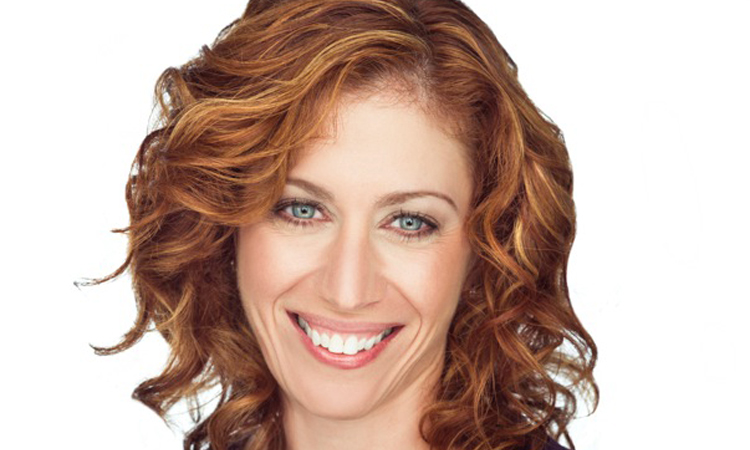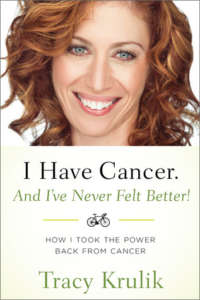
On August 31, 2007, I woke up in the recovery room in pain. I had undergone an endoscopic ultrasound at Georgetown University Hospital in Washington, D.C., to learn more about the so-called mass that showed up on a CT scan of my pancreas. After nine years of debilitating illness, a doctor finally found the root cause.
A resident came to my gurney to check on me and said that there was indeed a mass. The doctor biopsied it, he said, which would explain why I was having discomfort. Feeling rightfully concerned, I asked the resident what he thought the mass was. His response? “Most likely cancer.”
My first thought was: “I’m going to die!” After a quick analysis of the situation, my next thought was: “If I’ve had pancreatic cancer for nearly a decade, shouldn’t I already be dead?”
It turns out that there are actually two brands of pancreatic cancers: Adenocarcinoma, more commonly referred to as “pancreatic cancer,” is very aggressive and occurs in nine or ten people out of 100,000 each year. The other type, called “islet cell” or “neuroendocrine” cancer, only occurs in five out of a million people and can be very slow growing. The latter is what I have. It’s also what Steve Jobs had.
If we had removed the tumor from my pancreas before it metastasized, I would have been cured. But by the time we caught it, the cancer had spread to my liver and chest, and no known medical treatments could put me into remission. I would spend the rest of my life with cancer.
What happened next was a five-year journey that helped me learn that just as people live long lives with diabetes or even AIDS, someone like me—with tumors hitchhiking on a few vital organs—can live with cancer as a chronic disease.
Dr. Cary Presant, professor of clinical medicine at the University of Southern California and past president of the American Cancer Society California Division, says that there are a number of these slow-growing tumors. Cancers that “smolder along,” as he puts it, include prostate, lymphoma, myeloma, and even some forms of lung and breast cancer.
Interestingly, there’s quite a bit of controversy over how to define indolent tumors. Earlier this year an NIH panel recommended that we not refer to slow-growing prostate cancers as “cancer.” They were concerned that patients would worry too much from the cancer label and then jump into unnecessary treatments.
I understand the panelists’ concerns. Cancer might possibly be the nastiest word in the English language. Even though I am in incredible health (despite the lingering tumors), people still turn white and back away from me when they learn that I have cancer. One woman actually argued with me that I must be mistaken—I couldn’t possibly have cancer, given that I can ride my bike 100 miles or more a week with ease and lift weights to cross-train.
She’s right. I don’t have the old-school definition of cancer, where we find a mass, go nuclear on it with chemotherapy or radiation, put the cancer into remission, and then test periodically to make sure it hasn’t returned.
But I do have cancer.


The problem with the ubiquitous fear of the word “cancer” is that we might rush into overly aggressive treatments and perhaps do more harm than good in the long run. If we are going to live with this cancer for many years, we need to consider what is worse: tumors sitting idly or growing at a snail’s pace, the toxic side effects from chemotherapy, or maybe even a different and more aggressive form of cancer developing from too much exposure to radiation during scans?
Battling with cancer is like a chess game to me. I don’t just focus on one move—I try to look years ahead and consider the long-term consequences from my treatment options.
When I was first diagnosed I devised a strategic plan for my fight against cancer: First I would employ the finest services Western medicine could provide—which turned out to be surgery to remove the primary tumor, half of my pancreas, and my spleen—and then once the initial crisis was over I would turn to complementary therapies to build my body into a cancer-fighting fortress.
Carolyn Katzin, renowned nutritionist and chair of the American Cancer Society California Division Board of Directors, says that a lot of people with lingering cancers do live a normal lifespan. “This is really where lifestyle comes in,” she says. Katzin teaches her patients about foods that can help prevent and fight chronic diseases like cancer.
Interestingly, Katzin points out that many people with a cancer diagnosis have a sharper focus on overall health. I’m one of them. When I faced my mortality at age 36, I made an abrupt shift toward taking better care of my body through a whole-foods plant-based diet, loads of exercise, and reduced stress. Rather than strictly banking on Western medicine to keep me alive, I’m an active participant in my battle with cancer—using my fork and my bike as weapons.
Dr. Presant says that a comprehensive approach of standard medical treatments combined with holistic devices is ideal for combating both indolent and aggressive cancers. He says that he’s “seen a real change in this country where we’re putting our funding not only into standard therapies, but also investing resources in complementary programs.”
The American Cancer Society, for example, supports research in natural products like curcumin—a substance found in turmeric—that have anti-cancer properties. Various fruits, vegetables, nuts, and herbs have been found to contain antioxidants to protect DNA from damage or to be used as anti-imflammatories and anti-carcinogens.
Just as exciting as this research is the Cancer Genome Project. Scientists are mapping out the genetic properties of a variety of cancers so that they can customize treatments to attack rogue cells with fewer side effects. Two years ago a patient would have spent $100,000 for such a study, but today the price is less than $20,000 and continues to drop.
The good news for me is that time is on my side. My goal is to keep my body as fit and healthy as possible so that my immune system can fight the disease on its own while the medical community develops newer and more effective treatments.
Since my diagnosis, a number of new therapies have become available that could slow down my cancer even further should my immune system need an assist. In addition, researchers at Johns Hopkins have mapped the genetic makeup of neuroendocrine cancer. Such progress gives me strength in knowing that my strategy is working.
In the meantime, through the marvels of advanced screening techniques, my doctors and I are watching and waiting—referred to in the medical world as “active surveillance.” I was uncomfortable with the idea of just sitting back and watching the tumors inside me grow or not, but I’ve come to appreciate the approach. “It’s not that you disregard cancer,” says Dr. Presant. “It’s that you watch it.”
While we do, I’ll continue to fill my body with as much nutrient-dense food as my stomach can hold and ride my bike up steeper and longer hills to flood my cells with oxygen.
“You can live with cancer,” Dr. Presant says.
I do. And amazingly, I’ve never felt better.
Previously published in Whole Life Magazine. Reprinted with permission.
Find Out More
- Bruce A. Chabner, Matthew Smith, “Call It Cancer,” The Oncologist
- Stacy Simon, “New Report Tracks Growing Population of Cancer Survivors in the U.S.” American Cancer Society
- David Donald, “Forty Percent of Medicare Spending on Common Cancer Screenings Unnecessary, Probe Suggests,” The Center for Public Integrity
- “Evidence Shows Activity and Plant-Based Diet Lowers Cancer Risk, Even Later in Life,” American Institute for Cancer Research
- Jane Louis Phillips and David C. Currow, “Cancer as a Chronic Disease,” Collegian Journal
- Linus Pauling Institute, information on curcumin



